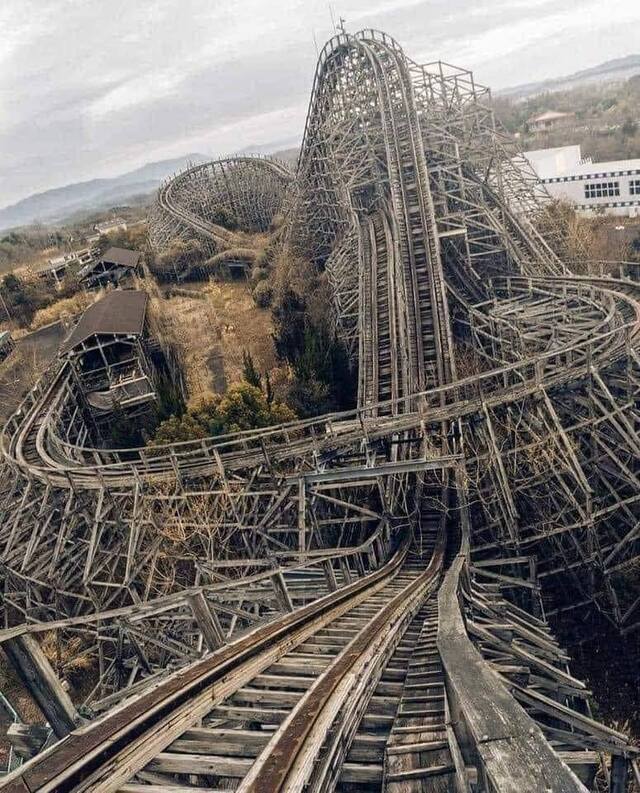Deep in the heart of Japan lies the eerie remains of Nara Dreamland, an amusement park once brimming with joy and excitement. Among its deserted attractions stands the iconic wooden roller coaster, a haunting relic of a time long gone. Now overtaken by nature, this structure has become a symbol of nostalgia and mystery. What secrets do these weathered tracks hold, and why do they continue to mesmerize explorers and dreamers alike?
The Dream That Was Nara Dreamland
Nara Dreamland opened in 1961, inspired by the success of Disneyland in California. Its founders sought to bring the magic of an American-style amusement park to Japan, complete with a fairytale castle, lively attractions, and thrilling rides. At its peak, Nara Dreamland was a beacon of happiness, drawing families from across the country to enjoy its whimsical charm.

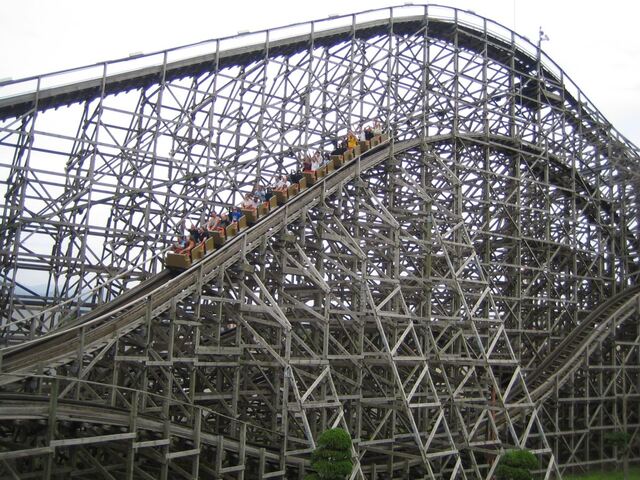
The wooden roller coaster, one of its most celebrated attractions, was the crown jewel of the park. Designed to embody the excitement of classic amusement parks, this coaster stood as a testament to the ambition and creativity of its creators. Its towering wooden frame and exhilarating drops provided endless thrills, cementing its place in the hearts of visitors.
Video:
The Wooden Roller Coaster: A Marvel of Its Time
Unlike the steel roller coasters of today, Nara Dreamland’s wooden roller coaster boasted a rustic charm that added to its appeal. The sound of its creaking tracks and the feeling of its rickety cars rushing through sharp turns offered riders a unique and unforgettable experience. It wasn’t just a ride; it was a journey filled with adrenaline and anticipation.
The coaster was meticulously constructed from robust wooden beams, which gave it both durability and a distinctive aesthetic. For many, it symbolized the excitement of childhood adventures and carefree moments. Its presence dominated the park, standing tall as a beacon of thrill and wonder.
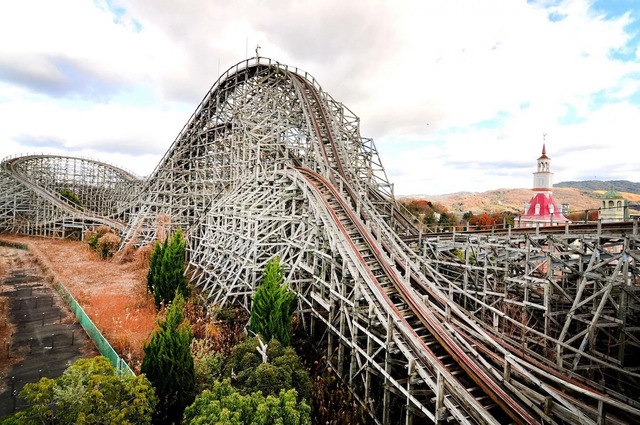
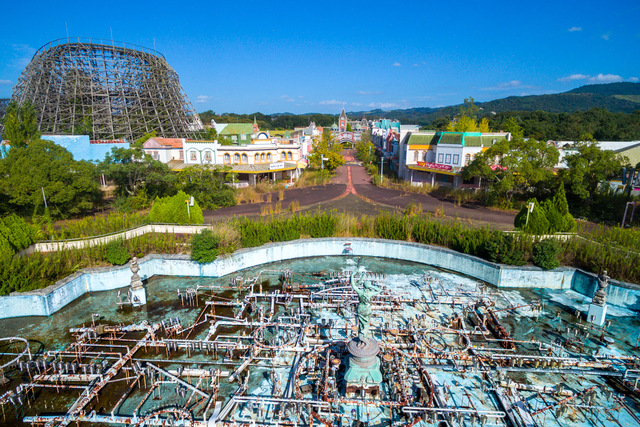
The Decline of Nara Dreamland
Despite its initial success, Nara Dreamland’s fortunes began to dwindle in the late 20th century. The emergence of other major amusement parks, such as Tokyo Disneyland and Universal Studios Japan, created fierce competition. Visitors flocked to these newer parks, leaving Nara Dreamland struggling to maintain its relevance.
The park’s management faced financial difficulties, and by the early 2000s, its attractions were falling into disrepair. The wooden roller coaster, once a source of pride, became a shadow of its former self. In 2006, after years of dwindling attendance, Nara Dreamland closed its gates for good, leaving its rides, including the iconic coaster, to the mercy of time and nature.
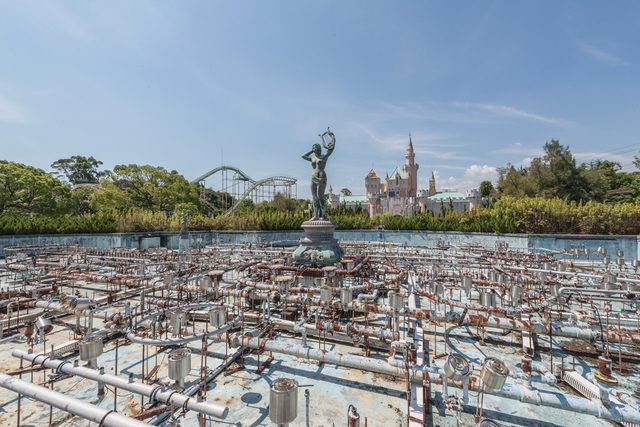
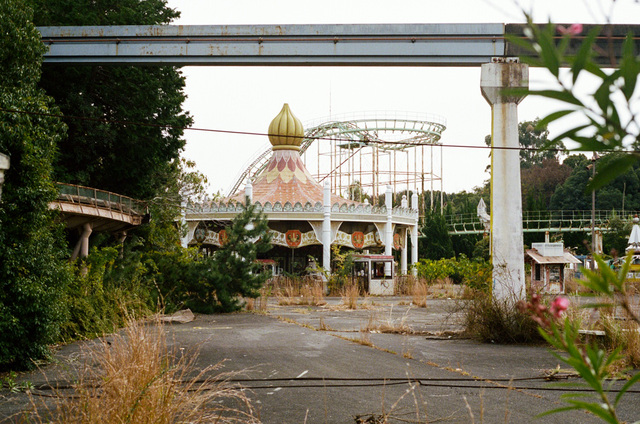
The Roller Coaster Today: A Haunting Relic
Since its closure, Nara Dreamland’s roller coaster has become a haunting yet mesmerizing sight. The once-thrilling ride now stands abandoned, its wooden frame weathered and its tracks covered in moss. Nature has slowly reclaimed the structure, with vines creeping along its beams and wildlife finding refuge in its shadows.
The roller coaster’s eerie beauty has drawn the attention of urban explorers and photographers from around the world. Its decaying tracks and skeletal frame evoke a sense of melancholy, reminding visitors of the fleeting nature of human creations. For many, the coaster represents not just a relic of a forgotten era but a powerful symbol of time’s inevitable march forward.
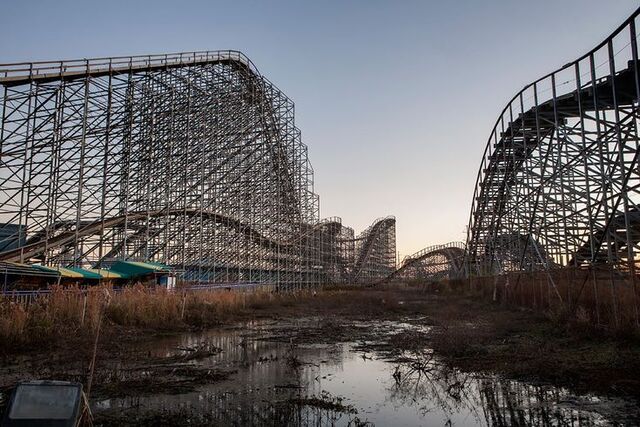
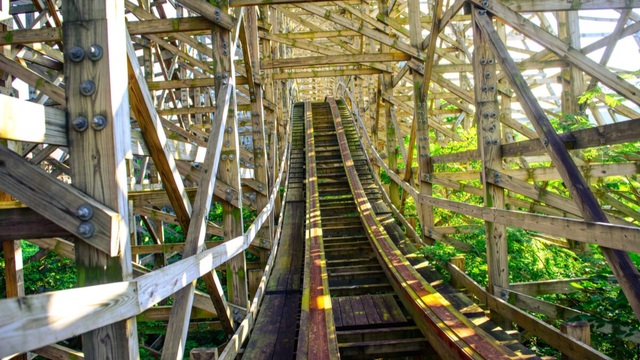
Urban Exploration and Its Allure
In recent years, the abandoned roller coaster has become a favorite destination for urban explorers. These adventurers are drawn to the site by its haunting atmosphere and the stories it holds. For them, the coaster is more than just an artifact of the past—it’s a canvas for their imaginations, a place where history and mystery collide.
Photographers have captured stunning images of the coaster, highlighting its decaying beauty. These photos often go viral, sparking curiosity and fascination among those who see them. The roller coaster, with its haunting allure, has taken on a life of its own in the digital age, continuing to captivate even as it crumbles.
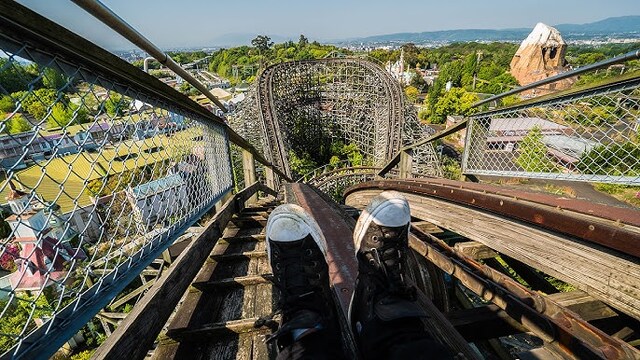
Memories and Nostalgia
For those who visited Nara Dreamland in its heyday, the roller coaster holds a special place in their hearts. Many recall the rush of excitement they felt as they climbed aboard the ride, the sound of the wheels clattering against the tracks, and the sheer joy of speeding through its twists and turns.
These memories have been preserved in the minds of former visitors, who often share their stories online or in interviews. For them, the roller coaster represents a cherished piece of their childhood—a reminder of simpler times filled with laughter and adventure.

Cultural Significance of the Roller Coaster
Beyond its role as an amusement park attraction, the roller coaster at Nara Dreamland carries cultural significance. It serves as a reminder of Japan’s post-war optimism and the country’s embrace of modern entertainment. During the 1960s and 70s, parks like Nara Dreamland symbolized progress and prosperity, offering families a chance to escape the challenges of daily life and create lasting memories.
Even in its current state of decay, the roller coaster continues to inspire awe and reflection. Its skeletal frame, standing against the backdrop of an overgrown park, reminds us of the impermanence of human achievements and the enduring power of nature.
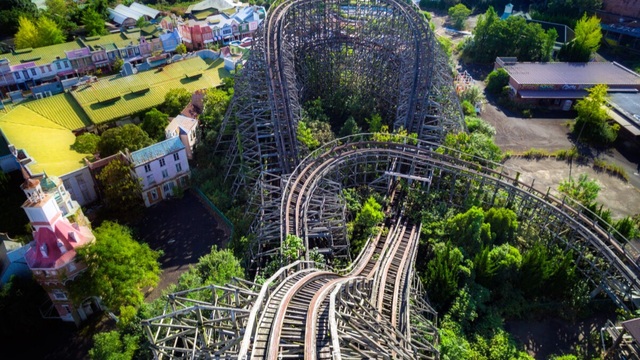
The Debate Over Preservation
The future of Nara Dreamland’s roller coaster remains uncertain. While much of the park was demolished in 2016, the coaster’s fate has been the subject of debate. Preservation advocates argue that the roller coaster is a valuable piece of cultural and architectural history, deserving of protection. Others contend that its deteriorated state makes restoration unfeasible, and that it should be allowed to fade away naturally.
Regardless of its ultimate fate, the roller coaster has already secured its place in history. Through photographs, memories, and stories, its legacy will endure, continuing to captivate and inspire those who encounter it.
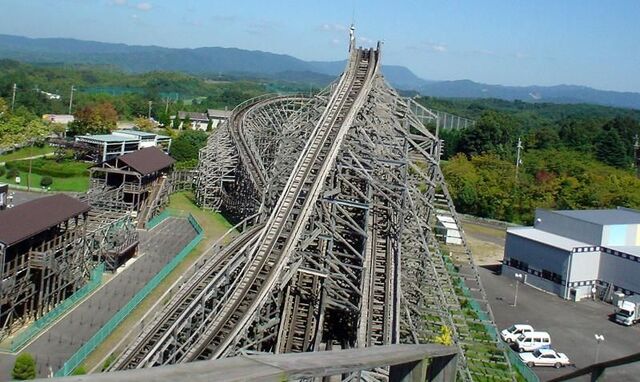
Conclusion
The wooden roller coaster of Nara Dreamland is more than just an abandoned ride—it’s a symbol of dreams, nostalgia, and the passage of time. Its haunting beauty and rich history have made it a source of fascination for explorers, photographers, and dreamers alike. While its tracks may never carry passengers again, the roller coaster remains a powerful reminder of the joy it once brought and the stories it continues to tell. For those who stand in its shadow, it offers a glimpse into a forgotten world—a testament to the enduring magic of dreams.
